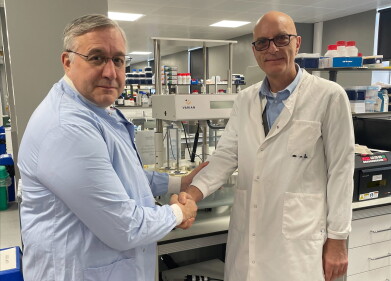News
What is a Robot Heart?
Jan 02 2018
From self-drive cars to artificial intelligence, the robotics revolution has arrived. Now, medical experts are predicting that robotic medicine could soon be saving lives. Published in the journal Science Robotics, a team of researchers has developed a next generation device that actively keeps the heart pumping.
So how does it work? According to the team, it cradles the heart and uses a probe to anchor itself to the wall that separates the lower chambers of the heart. This allows it to mimic the function of a single diseased chamber and help the heart to function as normal. For patients with heart conditions this could eliminate the need for transplants.
Introducing "soft" micro-machinery
Currently, doctors keep heart pumping using a ventricular assist devices. The external pumps are attached to the body and help distribute blood when the heart can't function independently. However, it does come with a unique set of challenges. As blood is flowing through machinery, patients are required to take blood thinners to ensure clots don't develop.
In comparison, robotic hearts are built into the organ and help to support normal function without the need for blood thinners. The micro-machinery that rests on the heart is made from soft polymers which don't irritate or puncture the flesh. It also swaps traditional motors for pneumatically activated technology which is a much gentler and non-invasive way to manipulate the heart.
Anchoring the heart
The device also features a rod that's inserted into the heart and anchors itself to the septum, which separates the upper and lower chambers of the heart. Once the device has been anchored into place the "soft" robot pumps the heart, while the rod actively pulls the septum wall. This simulate a squeezing motion which stimulates blood flow and replicates the motions of a beating of a heart.
“The septum is very actively engaged in the ventricular contraction,” explains study co-author Nikolay Vasilyev. “When the heart contracts, it's not only the free walls that move. The septum thickens during the contraction and moves inward into the respective ventricle.”
A new era of cardiology
The team has successfully tested the robot heart on a live pig, with hopes to move forward with more animal trials in 2018.
“In terms of technological development, I believe we are almost at the stage where a large company or a pool of investors take this technology to the next level and make a product out of it,” comments University of Leeds roboticist Pietro Valdastri. “I frankly hope this is going to happen, as this technology looks pretty ready to me for this type of jump.”
Universities play an important role in championing new technologies. For a behind the scenes glimpse at one of the UK's top institutions don't miss 'Wide Eyed with Wonder: University of Nottingham Open their Doors to the Community'.
Digital Edition
Lab Asia 32.2 April
April 2025
Chromatography Articles - Effects of small deviations in flow rate on GPC/SEC results Mass Spectrometry & Spectroscopy Articles - Waiting for the present to catch up to the future: A bette...
View all digital editions
Events
Apr 09 2025 Tokyo, Japan
Apr 22 2025 Hammamet, Tunisia
Apr 22 2025 Kintex, South Korea
Analytica Anacon India & IndiaLabExpo
Apr 23 2025 Mumbai, India
Apr 23 2025 Moscow, Russia



















